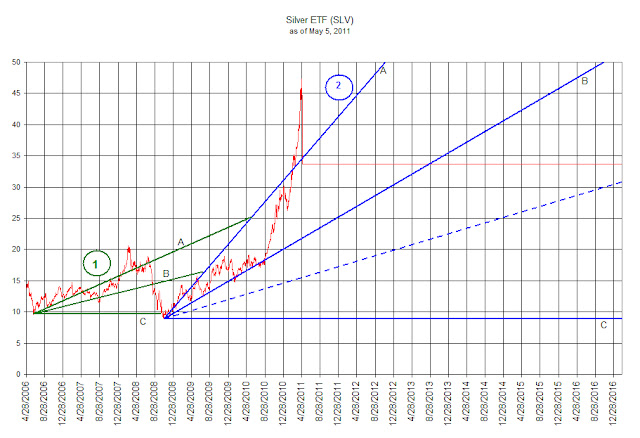May 27, 2011 Watch List
| Symbol | Name | Price | % Yr Low | P/E | EPS (ttm) | Dividend | Yield | Payout Ratio |
| HTLF | Heartland Financial USA, Inc. | 14.09 | 2.32% | 13.17 | 1.07 | 0.40 | 2.84% | 37% |
| TGT | Target Corp. | 49.37 | 2.36% | 12.07 | 4.09 | 1.00 | 2.03% | 24% |
| CHFC | Chemical Financial Corp. | 19.29 | 2.66% | 17.54 | 1.10 | 0.80 | 4.15% | 73% |
| ANAT | American National Insurance | 76.74 | 3.51% | 12.98 | 5.91 | 3.08 | 4.01% | 52% |
| WABC | Westamerica BanCorp. | 49.87 | 3.62% | 15.68 | 3.18 | 1.44 | 2.89% | 45% |
| HGIC | Harleysville Group Inc. | 31.56 | 4.12% | 11.31 | 2.79 | 1.44 | 4.56% | 52% |
| SJW | SJW Corp. | 22.8 | 4.20% | 17.81 | 1.28 | 0.69 | 3.03% | 54% |
| WEYS | Weyco Group, Inc. | 23.23 | 4.22% | 20.20 | 1.15 | 0.64 | 2.76% | 56% |
| HHS | Harte-Hanks, Inc. | 8.43 | 4.33% | 10.67 | 0.79 | 0.32 | 3.80% | 41% |
| BXS | BanCorp.South Inc. | 12.81 | 4.40% | 80.06 | 0.16 | 0.04 | 0.31% | 25% |
| TRH | Transatlantic Holdings, Inc. | 46.36 | 4.84% | 15.15 | 3.06 | 0.84 | 1.81% | 27% |
| NWN | Northwest Natural Gas Co. | 44.97 | 5.56% | 17.16 | 2.62 | 1.74 | 3.87% | 66% |
| SFNC | Simmons First National Corp. | 25.62 | 5.96% | 11.92 | 2.15 | 0.76 | 2.97% | 35% |
| NTRS | Northern Trust Corp. | 48.45 | 6.95% | 17.88 | 2.71 | 1.12 | 2.31% | 41% |
| GS | Goldman Sachs Group, Inc. | 138.66 | 7.07% | 15.19 | 9.13 | 1.40 | 1.01% | 15% |
| TMP | Tompkins Financial Corp. | 38.56 | 7.32% | 12.32 | 3.13 | 1.36 | 3.53% | 43% |
| SYBT | S.Y. BanCorp., Inc. | 24.24 | 7.78% | 14.18 | 1.71 | 0.72 | 2.97% | 42% |
| UBSI | United Bankshares, Inc. | 23.9 | 8.19% | 14.40 | 1.66 | 1.20 | 5.02% | 72% |
| CMA | Comerica, Inc. | 35.91 | 8.46% | 19.73 | 1.82 | 0.40 | 1.11% | 22% |
| BANF | BancFirst Corp. | 38.1 | 9.26% | 13.51 | 2.82 | 1.00 | 2.62% | 35% |
| MDP | Meredith Corp. | 31.6 | 9.27% | 11.09 | 2.85 | 1.02 | 3.23% | 36% |
| BMI | Badger Meter, Inc. | 37.14 | 9.30% | 20.98 | 1.77 | 0.56 | 1.51% | 32% |
| BOH | Bank of Hawaii Corp. | 46.98 | 9.41% | 13.09 | 3.59 | 1.80 | 3.83% | 50% |
| AWR | American States Water Co. | 34.42 | 10.18% | 20.01 | 1.72 | 1.12 | 3.25% | 65% |
| CTBI | Community Trust BanCorp. | 27.02 | 10.29% | 11.65 | 2.32 | 1.22 | 4.52% | 53% |
| CALM | Cal-Maine Foods, Inc. | 28.93 | 10.29% | 9.27 | 3.12 | 1.88 | 6.50% | 60% |
| CWT | California Water Service | 37.37 | 10.53% | 20.31 | 1.84 | 1.23 | 3.29% | 67% |
| MCY | Mercury General Corp. | 41.3 | 10.75% | 15.18 | 2.72 | 2.40 | 5.81% | 88% |
| GBCI | Glacier BanCorp., Inc. | 14.24 | 10.90% | 24.14 | 0.59 | 0.52 | 3.65% | 88% |
| 29 Companies | ||||||||
Watch List Summary
| Symbol | Name | 2010 Price | 2011 Price | % change |
| VIVO | Meridian Bioscience | 17.48 | 23.3 | 33.30% |
| FII | Federated Investors | 22.21 | 25.33 | 14.05% |
| LLY | Eli Lilly & Co. | 32.79 | 37.85 | 15.43% |
| XOM | Exxon Mobil Corp. | 60.46 | 82.63 | 36.67% |
| ADM | Archer Daniels Midland | 25.27 | 32.21 | 27.46% |
| Average | 25.38% | |||
| DJI | Dow Jones Industrial | 10,136.63 | 12,441.58 | 22.74% |
| SPX | S&P 500 | 1,089.41 | 1,331.10 | 22.18% |
Disclaimer:








